-
 Bitcoin
Bitcoin $118900
0.42% -
 Ethereum
Ethereum $3710
-2.88% -
 XRP
XRP $3.513
-2.96% -
 Tether USDt
Tether USDt $1.000
-0.01% -
 Solana
Solana $203.0
3.65% -
 BNB
BNB $765.5
-1.29% -
 USDC
USDC $0.9998
0.00% -
 Dogecoin
Dogecoin $0.2671
-4.18% -
 Cardano
Cardano $0.8817
-3.63% -
 TRON
TRON $0.3139
-0.64% -
 Hyperliquid
Hyperliquid $44.34
-5.45% -
 Stellar
Stellar $0.4637
-4.08% -
 Sui
Sui $3.908
-2.59% -
 Chainlink
Chainlink $19.34
-2.62% -
 Hedera
Hedera $0.2712
-3.77% -
 Avalanche
Avalanche $24.97
-4.13% -
 Bitcoin Cash
Bitcoin Cash $519.8
-1.48% -
 Shiba Inu
Shiba Inu $0.00001518
-3.74% -
 Litecoin
Litecoin $115.6
-2.21% -
 Toncoin
Toncoin $3.460
3.68% -
 UNUS SED LEO
UNUS SED LEO $8.977
-0.07% -
 Polkadot
Polkadot $4.460
-2.96% -
 Uniswap
Uniswap $10.53
-5.43% -
 Ethena USDe
Ethena USDe $1.001
0.01% -
 Monero
Monero $323.6
-0.36% -
 Pepe
Pepe $0.00001379
-2.60% -
 Bitget Token
Bitget Token $4.772
-3.90% -
 Dai
Dai $0.9999
0.00% -
 Aave
Aave $307.5
-6.66% -
 Bittensor
Bittensor $441.8
0.84%
How to manage risk when trading on Bybit?
Effective risk management on Bybit involves setting stop-loss and take-profit orders based on technical levels, using leverage wisely, and sizing positions to protect your account from major losses.
Jul 22, 2025 at 09:42 pm
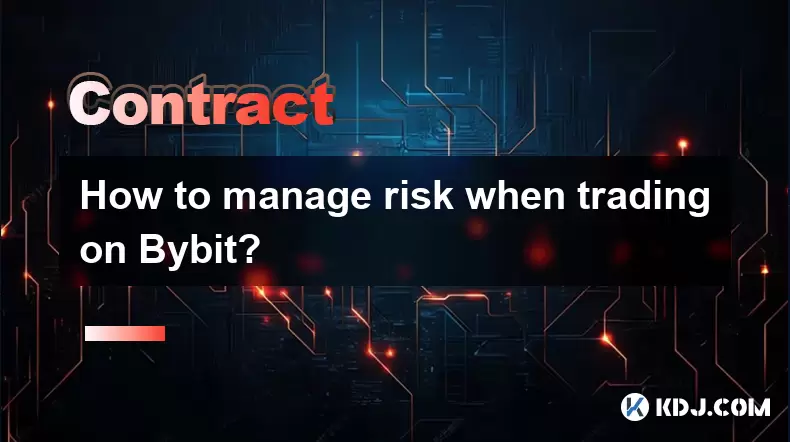
Understanding Risk Management in Crypto Trading
Risk management is the cornerstone of sustainable trading on platforms like Bybit. Without a structured approach, traders expose themselves to potential liquidation or significant losses. The key lies in recognizing that risk is not avoidable—it must be measured and controlled. Bybit offers several tools to help traders manage exposure, but using them effectively requires discipline. Traders must define their risk tolerance before entering any position and stick to it, regardless of market sentiment. This means setting clear parameters for how much capital can be allocated per trade—typically between 1% and 5% of total funds.
Setting Stop-Loss and Take-Profit Orders
Stop-loss and take-profit orders are essential tools for managing downside risk and locking in gains. On Bybit, these can be set directly in the order placement window.
- Navigate to the “Order” tab on the trading interface
- Select either “Limit” or “Market” order type
- Enter your desired price for entry
- Under “Advanced,” toggle on “Stop Loss” and input the price at which you want to exit if the market moves against you
- Similarly, set a “Take Profit” level to automatically close the position when your profit target is reached
These orders must be based on technical levels such as support/resistance or volatility indicators—not arbitrary numbers. For example, placing a stop-loss just below a known support level helps avoid being stopped out by minor price fluctuations. Bybit’s conditional orders ensure your positions are protected even when you’re not actively monitoring the market.
Using Leverage Wisely
Bybit allows leverage up to 100x on certain contracts, which can amplify both gains and losses. New traders often underestimate how quickly high leverage can lead to liquidation. To manage this: - Start with low leverage (e.g., 2x–5x) until you understand how liquidation works
- Use the “Risk Limit” feature in the futures contract settings to reduce exposure
- Monitor your “Maintenance Margin” level constantly—it shows the minimum equity needed to keep your position open
Leverage multiplies your effective position size, so a 1% move against you at 50x leverage equals a 50% loss. Always calculate your liquidation price before entering a trade using Bybit’s built-in calculator or third-party tools. This helps avoid emotional decisions when the market moves unexpectedly.
Position Sizing Based on Account Balance
Proper position sizing ensures that no single trade can wipe out your account. On Bybit, this means calculating how much you’re willing to risk in dollar terms, then determining the appropriate contract size. - Decide your maximum risk per trade (e.g., $50 on a $5,000 account = 1%)
- Determine your stop-loss distance in percentage terms (e.g., 5% from entry)
- Divide your risk amount by the stop-loss percentage: $50 / 0.05 = $1,000 position size
- Input this value under “Quantity” when placing your order
This method ensures consistency across trades. Even if one trade fails, your account remains intact for future opportunities. Bybit displays position size in USD value for inverse contracts and in coin amount for linear contracts—double-check which format applies to your chosen market.
Monitoring Liquidation Price and Margin Ratio
Bybit displays your liquidation price and margin ratio in real time on the position tab. These metrics are critical for active risk management. - If your liquidation price gets too close to the current market price, consider reducing position size or adding margin
- A margin ratio below 5% means you’re at high risk of liquidation—act immediately
- You can manually add margin to your position by clicking “Add Margin” under the open position
Ignoring these warnings can result in automatic liquidation without notice, especially during high volatility. Traders should refresh their positions regularly or use Bybit’s email/SMS alerts to stay informed.
Utilizing Bybit’s Risk Management Tools
Bybit provides advanced features like partial close, trailing stop, and auto-deleveraging prevention. - Partial Close: Exit part of your position to lock in profits while letting the rest run
- Trailing Stop: Set a dynamic stop-loss that follows price movement—ideal for trending markets
- Auto-Deleveraging Prevention: Avoid being AD’d by maintaining healthy margin levels and avoiding excessive leverage during volatile periods
These tools are accessible via the “More” menu in the position panel. Using them proactively reduces emotional trading and enforces discipline.
FAQs
Q: Can I change my stop-loss after placing a trade on Bybit?
Yes. Go to the “Conditional Orders” tab, find your active stop-loss order, and click “Edit.” Adjust the price and confirm. Note that modifying orders may incur fees depending on your account tier.Q: What happens if my position gets liquidated on Bybit?
Bybit’s insurance fund covers most losses beyond your margin, but you lose the full margin allocated to that position. Your remaining balance stays intact unless you have cross-margin enabled with insufficient funds.Q: How do I know if I’m using too much leverage?
If your liquidation price is within 5% of the current market price, you’re over-leveraged. Reduce position size or lower leverage immediately to avoid forced closure.Q: Does Bybit offer risk alerts via mobile app?
Yes. Enable “Price Alerts” and “Position Alerts” in the app’s notification settings. You’ll receive push notifications when your liquidation price or margin ratio reaches critical levels.
Disclaimer:info@kdj.com
The information provided is not trading advice. kdj.com does not assume any responsibility for any investments made based on the information provided in this article. Cryptocurrencies are highly volatile and it is highly recommended that you invest with caution after thorough research!
If you believe that the content used on this website infringes your copyright, please contact us immediately (info@kdj.com) and we will delete it promptly.
- SEC, Bitcoin, and Crypto: Navigating the Wild West of Digital Finance
- 2025-07-23 04:30:12
- Tyre Legalities, the 20p Test, and Expert Advice: Staying Safe on the Road
- 2025-07-23 04:50:12
- Liberty Head Double Eagle Proofs: A Golden Opportunity?
- 2025-07-23 04:55:12
- Solana NFTs Surge: Riding the Wave of Market Volume and NFT Hype
- 2025-07-23 04:30:12
- Stablecoin Market, US Treasuries, and Financial Risk: A Deep Dive
- 2025-07-23 05:00:13
- Wall Street Pepe (WEPE) and the Solana Meme Coin Mania: A New Era?
- 2025-07-23 03:30:13
Related knowledge

How to trade ETH perpetuals on Bitstamp?
Jul 23,2025 at 03:28am
Understanding ETH Perpetual ContractsETH perpetual contracts are derivative products that allow traders to speculate on the price of Ethereum without ...
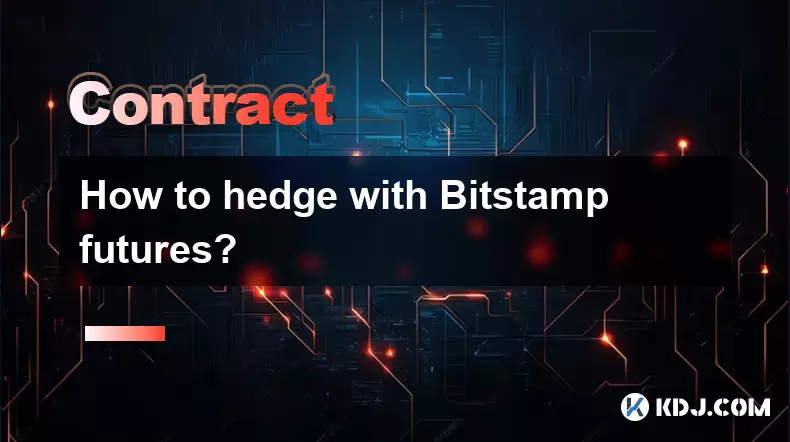
How to hedge with Bitstamp futures?
Jul 23,2025 at 02:00am
Understanding Bitstamp Futures ContractsBitstamp futures are financial derivatives that allow traders to speculate on or hedge against the future pric...
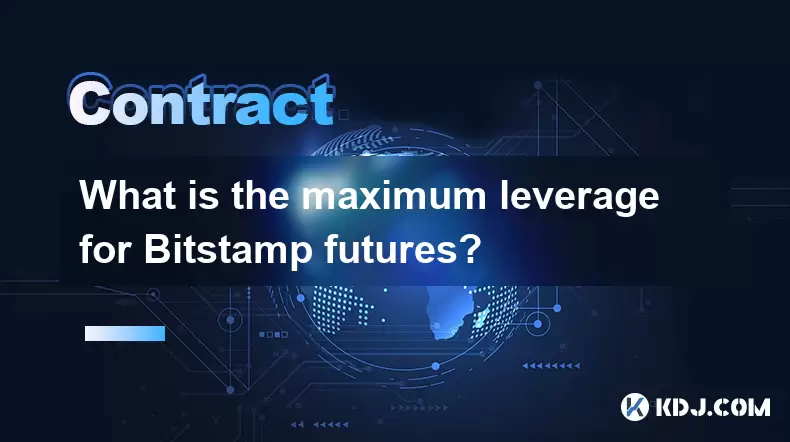
What is the maximum leverage for Bitstamp futures?
Jul 23,2025 at 05:21am
Understanding Bitstamp FuturesBitstamp, a well-established cryptocurrency exchange, offers futures trading to users seeking advanced financial instrum...
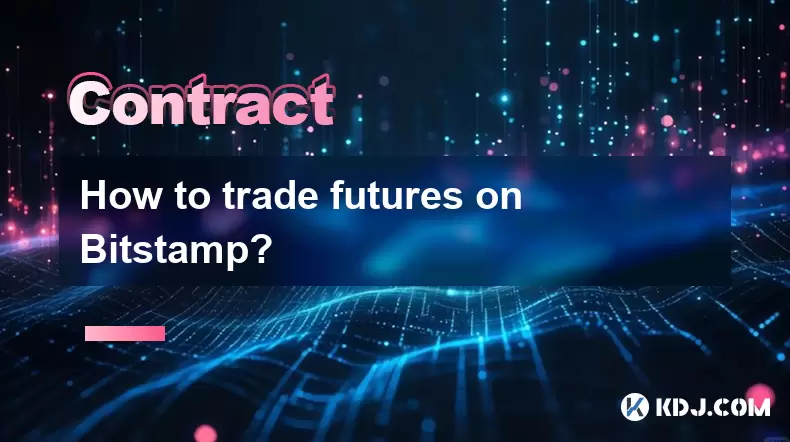
How to trade futures on Bitstamp?
Jul 23,2025 at 12:56am
Understanding Bitstamp Futures TradingFutures trading on Bitstamp allows users to speculate on the future price of cryptocurrencies such as Bitcoin an...

How to create a futures API key on Gate.io?
Jul 23,2025 at 03:49am
Understanding Futures API Keys on Gate.ioA futures API key on Gate.io allows traders to automate trading strategies, manage positions, and retrieve re...
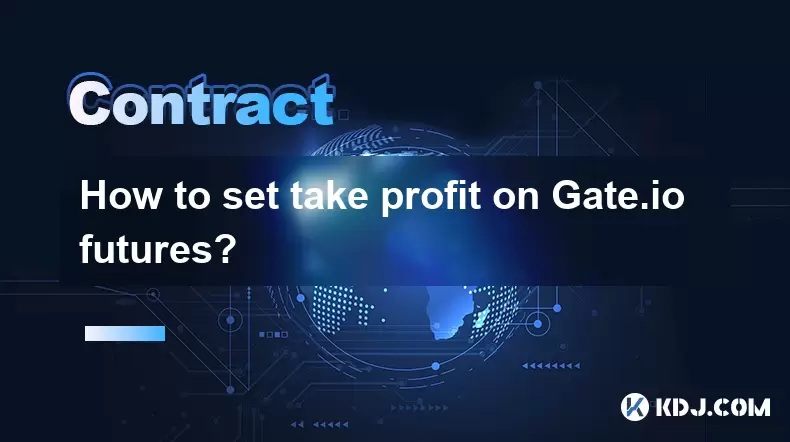
How to set take profit on Gate.io futures?
Jul 23,2025 at 01:14am
Understanding Take Profit in Gate.io FuturesWhen trading futures on Gate.io, a take profit (TP) order allows traders to automatically close a position...

How to trade ETH perpetuals on Bitstamp?
Jul 23,2025 at 03:28am
Understanding ETH Perpetual ContractsETH perpetual contracts are derivative products that allow traders to speculate on the price of Ethereum without ...

How to hedge with Bitstamp futures?
Jul 23,2025 at 02:00am
Understanding Bitstamp Futures ContractsBitstamp futures are financial derivatives that allow traders to speculate on or hedge against the future pric...

What is the maximum leverage for Bitstamp futures?
Jul 23,2025 at 05:21am
Understanding Bitstamp FuturesBitstamp, a well-established cryptocurrency exchange, offers futures trading to users seeking advanced financial instrum...

How to trade futures on Bitstamp?
Jul 23,2025 at 12:56am
Understanding Bitstamp Futures TradingFutures trading on Bitstamp allows users to speculate on the future price of cryptocurrencies such as Bitcoin an...

How to create a futures API key on Gate.io?
Jul 23,2025 at 03:49am
Understanding Futures API Keys on Gate.ioA futures API key on Gate.io allows traders to automate trading strategies, manage positions, and retrieve re...

How to set take profit on Gate.io futures?
Jul 23,2025 at 01:14am
Understanding Take Profit in Gate.io FuturesWhen trading futures on Gate.io, a take profit (TP) order allows traders to automatically close a position...
See all articles

























































































